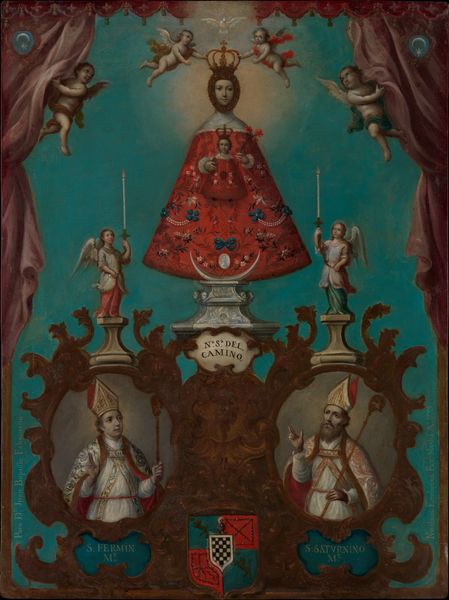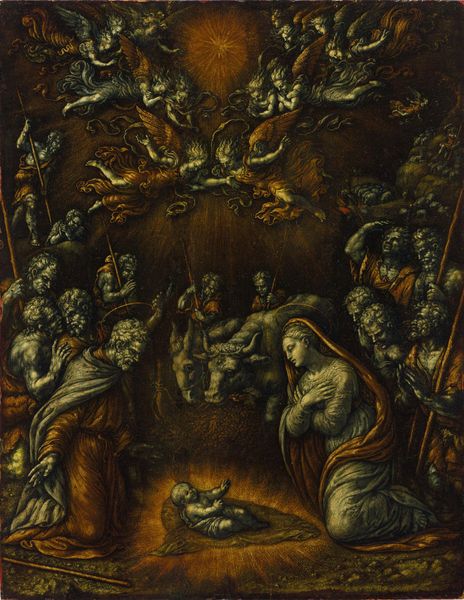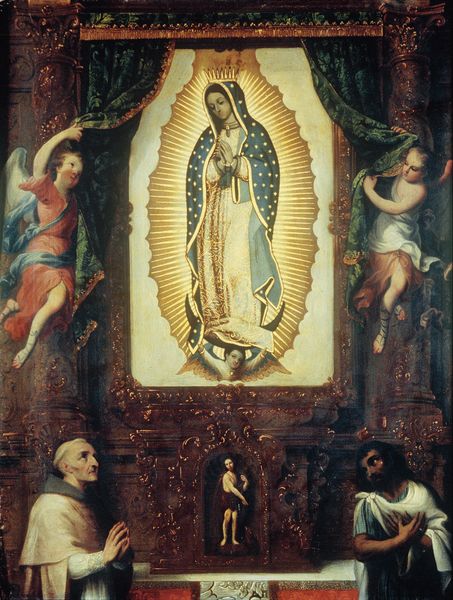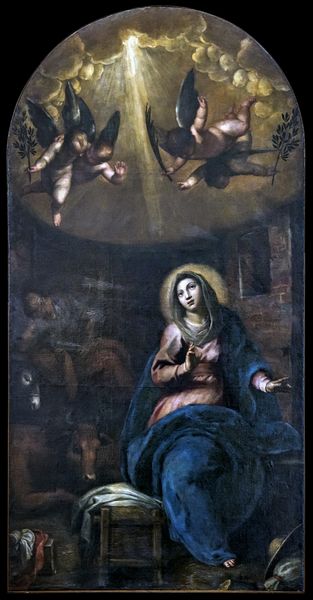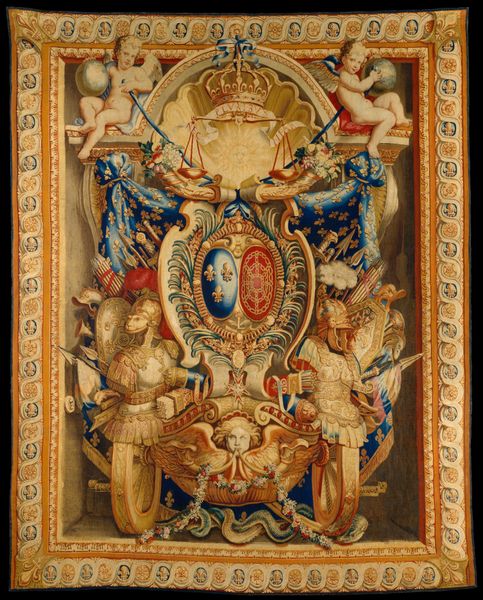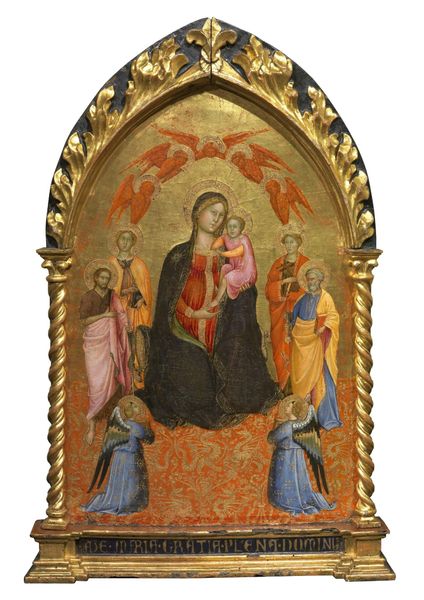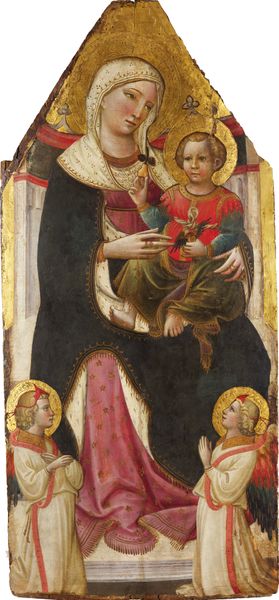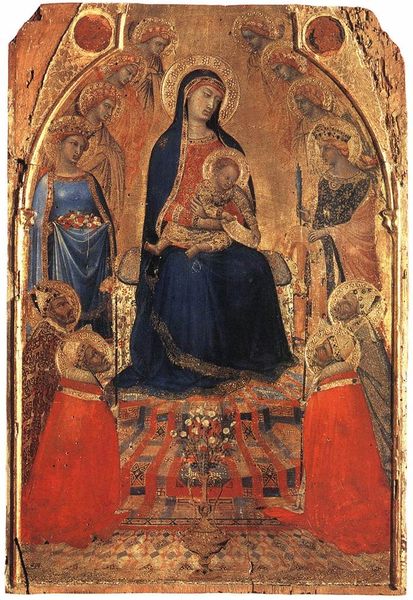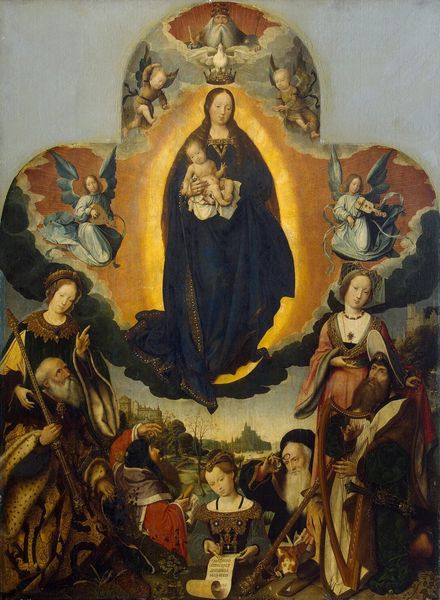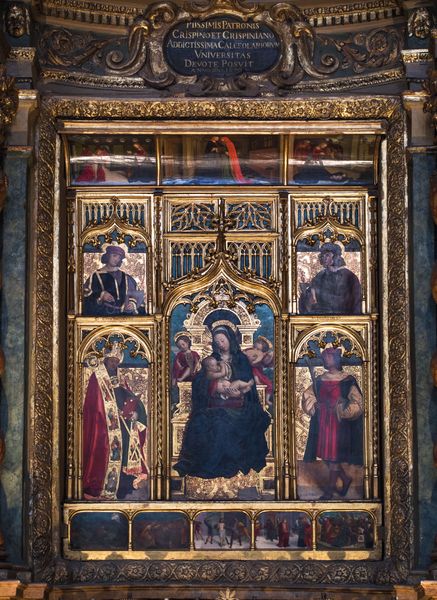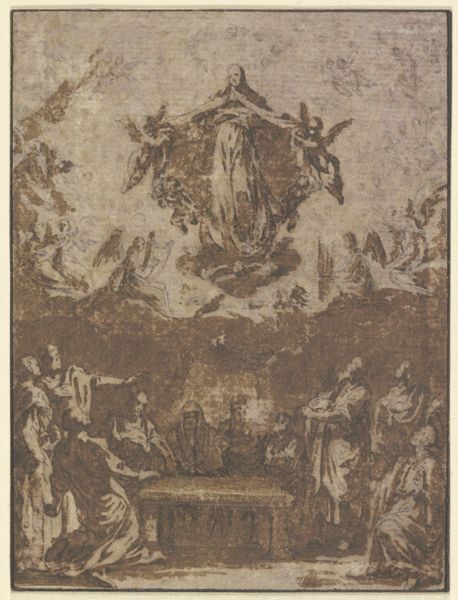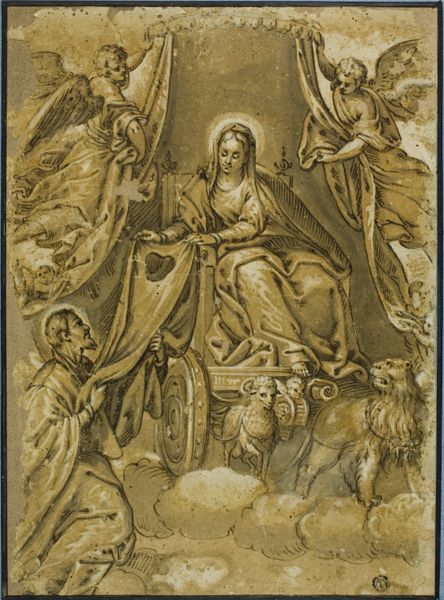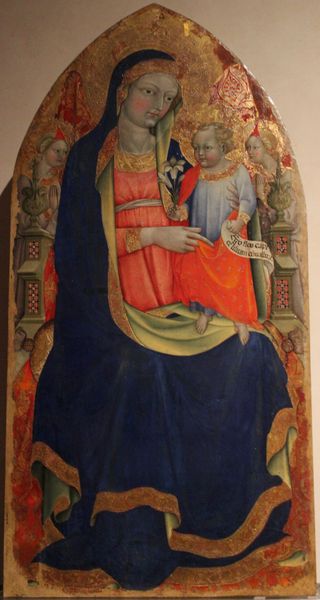
Nuestra Señora de los Desamparados (Our Lady of the Forsaken) 18th century
0:00
0:00
painting, oil-paint
#
portrait
#
water colours
#
baroque
#
painting
#
oil-paint
#
figuration
#
oil painting
#
history-painting
#
watercolor
Dimensions: 50 × 42 1/2 in. (127 × 108 cm)
Copyright: Public Domain
Curator: Here we have an anonymous 18th-century painting titled "Nuestra Señora de los Desamparados," or "Our Lady of the Forsaken," currently held at the Metropolitan Museum of Art. Editor: It’s remarkable, actually. The patina really strikes me; it feels so visceral and worn, adding an immediate layer of pathos to the piece. Curator: Indeed. Looking closely, we can observe the likely use of oil paints, perhaps with the addition of watercolor to soften some edges. The choice of materials indicates a degree of accessibility to resources. Now, situating this within its historical context… considering its emergence in the 18th century, what sociopolitical dynamics might it reflect? Editor: Immediately, my mind leaps to colonial structures, particularly in Latin America. The image of the Virgin, flanked by angels and children, speaks volumes about the Church’s influence and its role in both consoling and controlling populations. The Virgin’s stoic gaze, despite being titled "of the Forsaken", seems to suggest resilience, doesn't it? Curator: It’s crucial to recognize the visual language employed. The draping of the Virgin's robes, the precise crafting of the crown, the depiction of each cherub—these choices indicate a meticulous hand but also point to standardized production methods characteristic of religious art workshops from that time. Editor: Precisely! It underscores the institutional framework from which this piece emerged. This imagery often served as a bridge between the divine and everyday existence and was crucial for both religious instruction and social indoctrination, shaping perceptions of gender roles, class, and faith. Curator: How do we understand the creation of such an object as it pertains to class divisions, access to education and resources, or religious beliefs? Editor: Thinking of those ‘forsaken’ hinted in the title, one might examine whose stories or struggles were silenced by these visual narratives, and which populations or ideologies were excluded. I think of the Indigenous communities displaced, oppressed during the colonial period and even how enslaved individuals' suffering may have been disregarded while an image of salvation like this was given so much weight. Curator: It’s intriguing how engaging with materiality compels us to rethink and reclaim diverse histories, questioning canonical interpretations. Editor: Absolutely. And through this approach, the image invites continuous interrogation—an exploration of both faith and cultural negotiation—allowing us to appreciate it with both intellectual awareness and empathy.
Comments
No comments
Be the first to comment and join the conversation on the ultimate creative platform.
